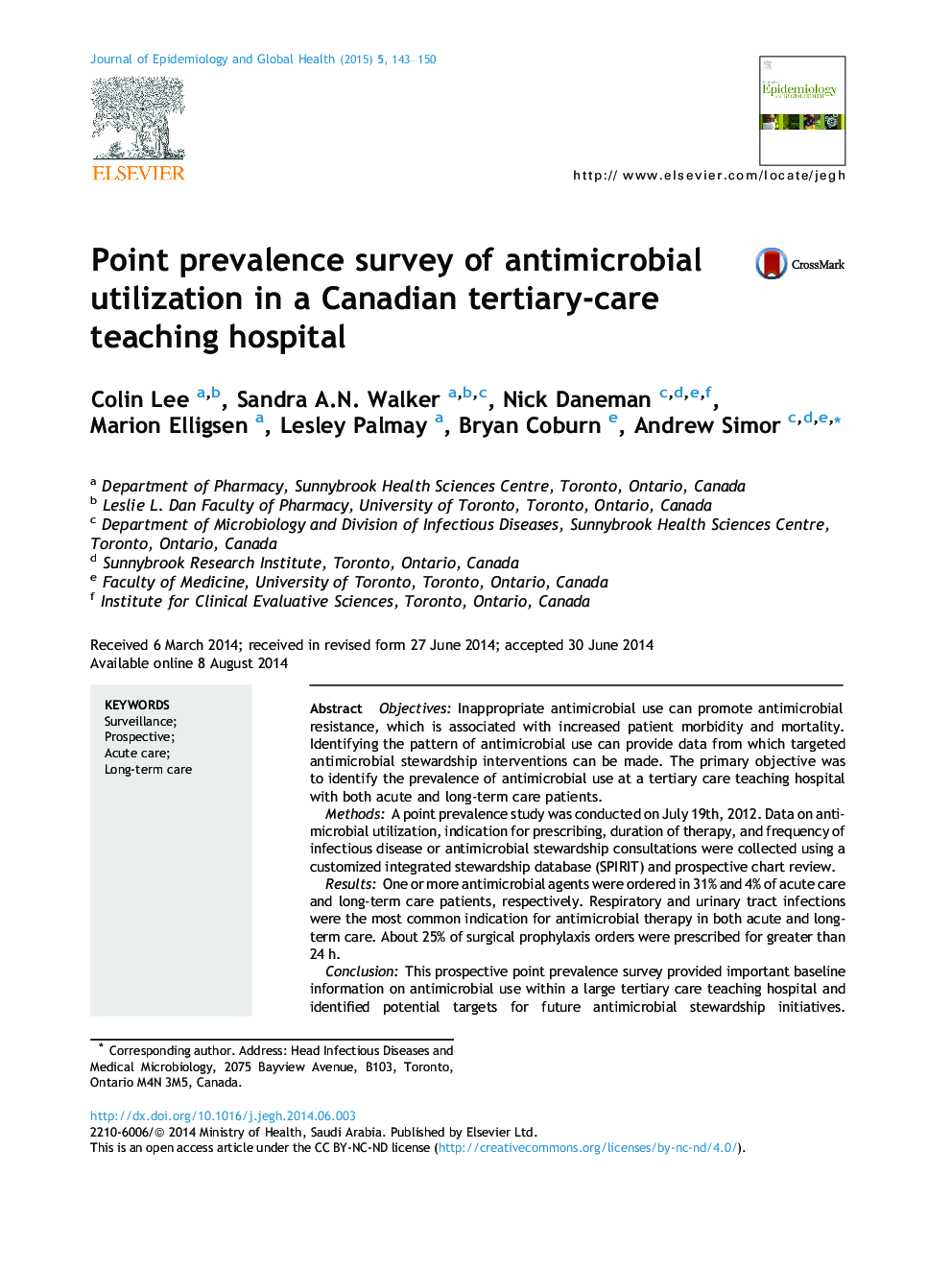| کد مقاله | کد نشریه | سال انتشار | مقاله انگلیسی | نسخه تمام متن |
|---|---|---|---|---|
| 3327588 | 1212194 | 2015 | 8 صفحه PDF | دانلود رایگان |
ObjectivesInappropriate antimicrobial use can promote antimicrobial resistance, which is associated with increased patient morbidity and mortality. Identifying the pattern of antimicrobial use can provide data from which targeted antimicrobial stewardship interventions can be made. The primary objective was to identify the prevalence of antimicrobial use at a tertiary care teaching hospital with both acute and long-term care patients.MethodsA point prevalence study was conducted on July 19th, 2012. Data on antimicrobial utilization, indication for prescribing, duration of therapy, and frequency of infectious disease or antimicrobial stewardship consultations were collected using a customized integrated stewardship database (SPIRIT) and prospective chart review.ResultsOne or more antimicrobial agents were ordered in 31% and 4% of acute care and long-term care patients, respectively. Respiratory and urinary tract infections were the most common indication for antimicrobial therapy in both acute and long-term care. About 25% of surgical prophylaxis orders were prescribed for greater than 24 h.ConclusionThis prospective point prevalence survey provided important baseline information on antimicrobial use within a large tertiary care teaching hospital and identified potential targets for future antimicrobial stewardship initiatives. A multi-center point prevalence survey should be considered to identify patterns of antimicrobial use in Canada and to establish the first steps toward international antimicrobial surveillance.
Journal: Journal of Epidemiology and Global Health - Volume 5, Issue 2, June 2015, Pages 143–150
